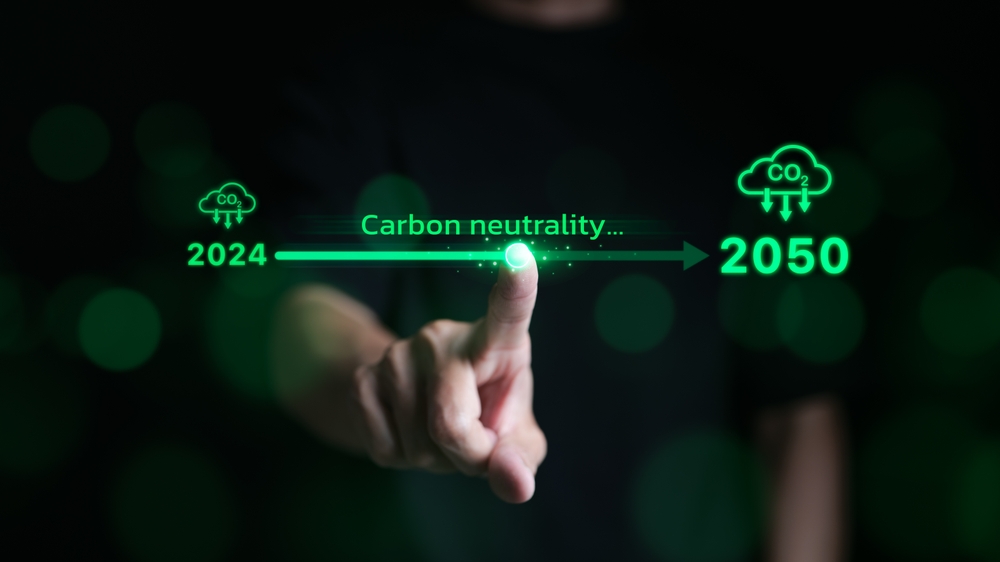As investors grow more attuned to environmental, social, and governance (ESG) factors, traditional asset classes are being reassessed through the lens of sustainability. One of the most rapidly evolving opportunities at the intersection of finance and climate action is the carbon market. Once relegated to regulatory compliance and obscure climate talks, carbon credits have now emerged as a viable, dynamic asset class—poised to play a central role in global decarbonization efforts.
Carbon markets, in both their compliance and voluntary forms, are unlocking new avenues for green-minded investors to pursue returns while contributing to climate goals. From hedge funds to family offices, institutional capital is increasingly viewing carbon as not just an environmental necessity but also a strategic allocation. The transformation of carbon markets into an investable asset class brings with it both significant opportunities and notable challenges. For investors seeking to blend environmental impact with financial performance, understanding the structure, risks, and future outlook of carbon markets is essential.
What Are Carbon Markets?
Carbon markets are systems that enable the trading of carbon emission allowances or offsets. Their primary function is to put a price on carbon dioxide (CO₂) emissions, creating a financial incentive for companies and governments to reduce their environmental impact.
There are two major types of carbon markets:
- Compliance Markets
These are regulated markets established by regional, national, or international bodies to meet legally binding emission reduction targets. Entities covered by a regulatory cap must either reduce emissions or purchase allowances to cover any excess. The most prominent example is the European Union Emissions Trading System (EU ETS). - Voluntary Carbon Markets (VCMs)
These markets allow companies, organizations, or individuals to purchase carbon credits on a voluntary basis, typically to meet internal sustainability targets or demonstrate climate leadership. VCMs support a wide range of offset projects, from forest conservation to methane capture and renewable energy deployment.
Each credit or allowance represents the right to emit one metric ton of CO₂ or the equivalent in other greenhouse gases (CO₂e). Once purchased and “retired,” a credit offsets an equivalent amount of emissions.
The Investment Case for Carbon
The thesis behind carbon as an asset class is rooted in simple economics: as demand for emissions reductions rises and supply becomes constrained by regulations or project limitations, prices are expected to rise. This supply-demand dynamic creates the potential for appreciation in the value of carbon credits or allowances.
Price Appreciation Potential
In compliance markets, tightening regulatory caps directly limit supply. In regions like the EU, annual reductions in available allowances aim to reach net-zero targets by 2050, pushing prices upward over time. Similarly, in voluntary markets, as more companies set ambitious net-zero targets, demand for verified carbon offsets is projected to soar.
Investors who acquire carbon assets today are effectively buying into the future scarcity of emissions allowances. This makes carbon an inflation-hedged, policy-driven instrument with upside potential tied to the acceleration of climate policy.
Diversification and Non-Correlation
Carbon credits and allowances tend to exhibit low correlation with traditional asset classes such as equities and fixed income. This makes them a potentially useful addition to a diversified portfolio, especially in ESG-tilted funds. For impact investors, carbon markets offer measurable environmental benefits tied directly to each investment.
Green Alpha
For investors focused on long-term sustainability trends, carbon markets offer exposure to what many see as the “green alpha” opportunity—participating in the revaluation of assets as environmental constraints reshape industries. Just as fossil fuels dominated portfolios in the 20th century, carbon efficiency and neutrality may define the outperformers of the 21st.
Types of Carbon Investments
Investors interested in carbon markets can gain exposure through several avenues, each with varying degrees of complexity, liquidity, and impact.
1. Carbon Allowance Futures
These are standardized, exchange-traded contracts tied to compliance markets such as the EU ETS or California’s Cap-and-Trade program. Futures allow investors to speculate on or hedge against carbon prices. The most commonly traded contracts are EUA (European Union Allowance) futures.
Pros:
- High liquidity
- Transparent pricing
- Efficient access to market exposure
Cons:
- Volatility driven by policy announcements
- Requires understanding of futures mechanics
2. Carbon Credit Funds and ETFs
Some funds pool investments into carbon allowances or credits, providing diversified exposure to carbon assets. These vehicles are managed by professionals who navigate complex regulatory environments and project validation standards.
Pros:
- Professional management
- Lower barrier to entry
- ESG-aligned strategy
Cons:
- Fees reduce net returns
- Limited number of pure-play carbon funds
3. Direct Credit Purchases and Retirement
Institutional and high-net-worth investors may purchase and retire voluntary credits directly from project developers. This is typically done through registries such as Verra or Gold Standard.
Pros:
- Direct climate impact
- Support for preferred project types
Cons:
- Low liquidity
- Requires due diligence on project integrity
4. Private Equity in Offset Project Development
Investors may also provide capital to develop carbon offset projects, earning returns through future credit sales. This approach combines real asset investing with sustainability objectives.
Pros:
- Potential for strong returns
- Tangible environmental impact
Cons:
- Long timelines
- High project risk
- Regulatory uncertainty
Market Size and Growth Trajectory
Carbon markets have grown significantly in recent years. The compliance market alone is valued in the hundreds of billions, with the EU ETS accounting for the largest share. Meanwhile, the voluntary carbon market has expanded rapidly, crossing the $2 billion mark in annual transactions and forecasted to scale to tens of billions within the decade.
Growth is fueled by several converging trends:
- Government net-zero commitments driving regulation and carbon pricing
- Corporate climate pledges increasing demand for high-quality offsets
- Standardization efforts improving credibility and transparency
- Technological advancements enabling better verification and monitoring
As carbon markets evolve, they are expected to become more interconnected, more liquid, and more integral to mainstream capital allocation strategies.
Key Risks and Considerations
Despite the compelling investment thesis, carbon markets are not without challenges. Any investor evaluating carbon as an asset class must carefully consider the following:
Regulatory Uncertainty
Carbon markets are ultimately policy-driven. Changes in political leadership, regulatory frameworks, or global climate accords can shift supply-demand dynamics rapidly. While long-term decarbonization appears inevitable, the path is uneven.
Market Integrity and Quality Concerns
Especially in the voluntary market, not all carbon credits are created equal. Projects may overstate emission reductions, lack permanence, or fail additionality tests (meaning the project would have happened anyway). As a result, investors must perform careful due diligence.
Price Volatility
Carbon prices can be highly volatile, reacting to headlines, legislative negotiations, and economic cycles. This creates both opportunity and risk for investors accustomed to smoother return profiles.
Liquidity Constraints
Outside of exchange-traded futures, many carbon assets are not easily tradable. Long holding periods and difficulty in exit strategies make them less suitable for certain portfolios.
The Role of Technology and Standards
Technology and standardization are playing a crucial role in shaping the future of carbon markets. Emerging platforms are improving traceability, reducing fraud, and enabling more efficient trading.
- Blockchain is being deployed to ensure transparency and prevent double-counting of offsets.
- Remote sensing and AI are enhancing verification accuracy for forestry, agriculture, and energy projects.
- Digital registries and APIs are improving liquidity by connecting buyers and sellers more efficiently.
Meanwhile, organizations like the Integrity Council for the Voluntary Carbon Market (ICVCM) and the Taskforce on Scaling Voluntary Carbon Markets (TSVCM) are working to establish common standards, which will help unlock institutional capital by increasing trust in carbon credits.
Carbon as a Tool for Portfolio Decarbonization
Beyond speculation or return-seeking behavior, carbon credits can also serve a more strategic function—enabling institutional investors to offset hard-to-abate emissions in their portfolios. This approach is particularly relevant for sectors like aviation, shipping, or heavy industry, where near-term reductions are technologically or economically difficult.
Some asset managers are using voluntary carbon credits as a “transitional bridge” while they push underlying holdings toward lower emissions. Others see carbon investments as a way to hedge regulatory risk, anticipating the financial impact of carbon pricing on high-emission assets.
In this context, carbon becomes both an asset and a liability management tool—one that helps institutional portfolios align with net-zero trajectories while still pursuing growth.
Institutional Adoption and Trends
Major financial institutions are beginning to make significant moves into carbon markets:
- Hedge funds and trading houses are launching dedicated carbon strategies
- Asset managers are integrating carbon into thematic ESG funds
- Corporate treasuries are hedging sustainability pledges through credit purchases
- Banks are building carbon trading desks to service growing client demand
These trends are accelerating the maturation of the carbon market, drawing in talent from commodities, energy, and fixed income desks to structure products, evaluate credits, and manage risk.
The Future of Carbon Markets: Consolidation, Scaling, and Integration
The next decade will likely bring increased integration between carbon markets and broader financial systems. Just as oil contracts became central to global trade and investment in the 20th century, carbon credits and allowances may soon become embedded in everything from insurance underwriting to corporate M&A strategy.
Key developments to watch include:
- Global market linkages connecting regional carbon systems
- Carbon credit tokenization for increased retail access
- Exchange-traded carbon derivatives gaining depth and volume
- Mandatory climate disclosures driving corporate credit demand
- Innovation in engineered carbon removal technologies, expanding the supply side
Carbon’s evolution into a mature asset class will mirror the path of other commodities and alternative investments, but with the added imperative of environmental impact.
A New Frontier for Impact and Returns
Carbon markets are no longer the exclusive domain of regulators and environmentalists. They are rapidly becoming a vital tool for capital markets to engage with one of the defining challenges of our time—climate change. As carbon pricing becomes more entrenched in global economic systems, credits and allowances offer investors not only a vehicle for financial return but also a platform for genuine climate action.
For green investors seeking to align capital with conviction, carbon markets represent a unique intersection of policy, innovation, and sustainability. As infrastructure improves, standards mature, and liquidity deepens, carbon is emerging as a legitimate, impactful, and forward-looking asset class worthy of institutional attention.
Yet, as with all investments tied to complex global transitions, the road ahead will be marked by volatility, uncertainty, and evolving norms. Due diligence, flexibility, and a long-term view will be key to navigating this frontier.
In the end, investing in carbon is not just about trading emissions—it’s about helping define the cost of pollution, the value of mitigation, and the future of climate finance.






